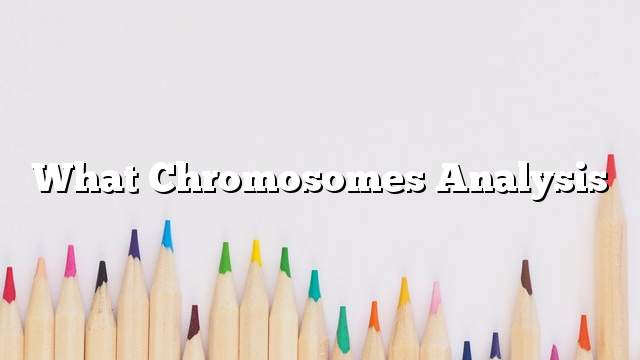Chromosomal analysis
Chromosomes are usually analyzed on some blood cells in order to know the increase or decrease in the number of chromosomes, the genetic pigments in the form of biceps of a very small size that can only be seen by microscopy.
The chromosomes are made up of 46 chromosomes, each pair has a certain number, numbered from 23 to 23, and the number 23 does not usually give a number because it determines gender. If the chromosome appears in xx, This indicates that the child is female, but in the case of (xy) it is male, and each base has ancestry.
How to Perform Chromosomal Analysis
- Chromosomal analysis can be performed on any sample in the body with a cell and nucleus, which means that it can be performed on blood samples, amniotic fluid or placenta.
- Blood samples are easy to analyze through white blood cells; they contain nuclei, and red blood cells are useless for analysis because they do not contain a nucleus, so the sample must be transported to the laboratory as soon as possible, with anti-coagulants added.
- After the arrival of the sample of the examination to the laboratory to add nutrients and promoter for reproduction and division, and after days – not less than three days – the sample is placed on a piece of glass, and are dyed certain pigments and examined under the microscope and then photographed and printed, so the final result of the analysis may take Week, and may extend to a month of its history, and in relation to critical cases are given a preliminary result within days.
Reasons for chromosomal analysis
- Chromosomal analysis is often required when a chromosomal problem is suspected. In Down syndrome, the chromosomal increase is from 46 to 47 chromosomes and is three copies instead of two copies.
- Chromosomal analysis is performed in the case of Edward syndrome, in addition to Bataw syndrome, which has an increase in chromosomes; chromosome 18 is increased in Edward syndrome, and Bataw’s syndrome is the increase in chromosome 13.
- The test is performed in Turner syndrome and Kleinfelter syndrome. The number is (47) with two copies of chromosome (x) and a copy of chromosome (y).
- Chromosomal analysis is performed in cases of congenital anomalies and defects, where a deficiency or increase is known to detect the problem.
